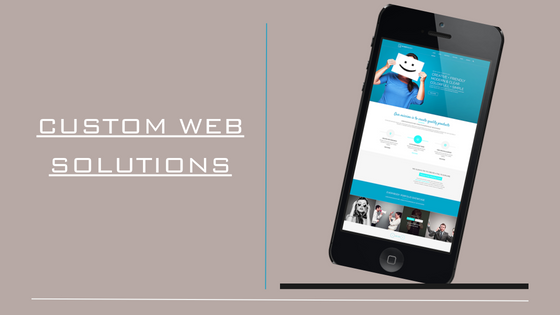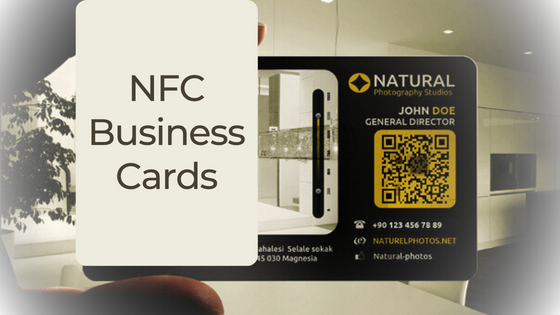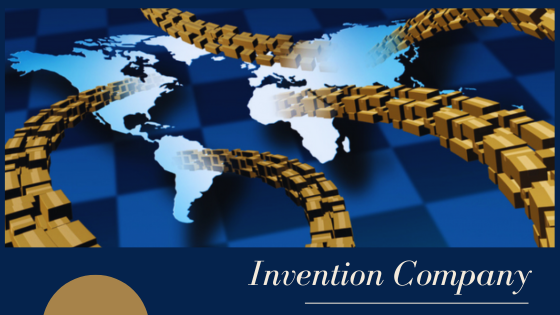Technology
The Crucial Role of Patent Agencies in Filing Patent Applications
When inventors conceive a new idea, protecting it with a patent becomes paramount. However, the process of obtaining a patent includes many complex steps and requires a deep understanding of patent laws. This is where patent agencies like InventHelp come into the picture, aiding inventors on their journey through the patent application and filing process.
Understanding Patent Agencies
Patent agencies are organizations that specialize in providing assistance to those seeking to acquire patents for their inventions. These agencies house a diligent team of patent agents or attorneys who are well-versed in patent laws and the specifics of the patent application process. Companies like InventHelp have established strong reputations in this space, acting as essential guides for inventors navigating the patent landscape.
Guiding Through the Patent Application Process
A crucial aspect where patent agencies play a pivotal role is in preparing and filing the patent application. This process begins with drafting a patent application, a document that should accurately describe all aspects of the invention, including a detailed description, the claims defining the invention, and any relevant drawings.
The drafting of a patent application is a complex task that requires specific knowledge and technical expertise. Patent agents at a patent agency are trained professionals who know how to craft a compelling patent application to effectively outline the novelty and non-obviousness of the invention.

Navigating the Filing Process
Once the patent application is prepared, the next step is to file a patent application with the relevant patent office. Depending on the patent strategy, this could be at a national patent office, or international bodies such as the European Patent Office (EPO) or the World Intellectual Property Organization (WIPO). Filing a patent application involves adhering to specific rules and procedures, as well as payment of associated fees. Patent agencies handle these logistical complexities, ensuring that the application is successful.
Offering Support Post Filing
The patent journey doesn’t end with filing the patent application. The patent office examines the application, a process that can take several years and may involve correspondence with the patent office to prove the novelty and inventive step of the invention. Patent agencies represent the inventors throughout this process, responding to any objections or queries that arise.
Conclusion
Patent agencies, with their crucial role in preparing, filing, and subsequently handling the patent application, are indeed a lifeline for inventors. By entrusting the complexities of the patent process to these agencies, inventors can focus on what they do best – inventing. The peace of mind that a proficient patent agency provides is invaluable to inventors as they step forward to mark their territory in the world of innovation.
The Psychology Behind Successful Dental Website Design
Creating a high-performing dental website is an endeavor that merges the realms of aesthetics, usability, and psychology. A well-designed website can be an invaluable tool for dental practices that want to increase their visibility and generate more leads. But a poorly designed site can have the opposite effect, turning away potential patients and causing a dent in your practice’s bottom line.
Dental websites must be both aesthetically pleasing and easy to use. They also need to address your patients’ needs, which can involve more than just listing services and prices.
The Influence of Color Psychology
Choosing the right color palette is an integral part of website design, primarily due to the subconscious effects colors have on human psychology. Colors do not merely define the aesthetics of your dental website, but they can also significantly influence user behavior and perceptions. Warm colors like red or yellow can create feelings of energy and stimulation, whereas cooler tones such as blue and green can evoke a sense of calm and trust. When choosing a palette, consideration must align with the brand’s identity and the feelings you aim to awaken in your prospective patients.
Font Styles’ Psychological Impact
While it may seem an afterthought, font selection plays a substantial role in enhancing user experience. Illegible, clashing, or poorly contrasted fonts can make interactions difficult, causing users to abandon the site. The trick is to select a clean, appealing, and easily readable font that aligns with your brand’s essence. Combining different font styles for headers and body text can further enhance usability and the aesthetic distinctiveness of your dental website.

Logo: the Emblem of Trust
Another crucial element in the psychology of dental website design is the logo. It serves as the visual embodiment of your brand, cementing recognition and recall. A well-designed logo speaks not only to your commitment to quality but also instills trust and credibility in your audience’s minds. It should be a clean, modern, and professional symbol that communicates your identity with just a glance.
Responsive Design: Ensuring Seamless User Experience
The last crucial aspect of successful dental website design is responsiveness. It’s essential that your website performs seamlessly across all devices – desktop, laptop, tablet, or smartphone. With more than half of global internet traffic coming from mobile users, optimizing your website for mobile use is a necessity, not an option. A website responsive to different screen sizes and orientations will enhance the user experience, leading to increased patient engagement and conversions.
Conclusion
To sum it up, successful dental website design is more than appealing visuals and informative content. It’s about understanding the subtle cues that influence user behavior and leveraging these cues to create an engaging site that converts visitors into patients. An effective dental website is built on the principles of color psychology, understanding the role of fonts and logos, and responsiveness in design. This cognitive paradigm shift, viewing website design from the user’s psychological perspective, could potentially turn the tables in the fiercely competitive dental market.
Combining SEO and Professional Website Management for Maximum Effectiveness
A strong online presence is crucial for success in the digital world. Two essential components of this presence are search engine optimization (SEO) and professional website management. By combining these practices, businesses can maximize their online visibility, drive targeted traffic, and maintain an optimally performing website. Let’s explore the synergistic relationship between SEO and website management, as well as their contributions to business success.
SEO and Website Management Working Together
While both SEO and website management practices contribute to a website’s success, they do so from different angles. SEO focuses primarily on visibility and organic traffic, utilizing strategies such as keyword optimization, content creation, and link building. On the other hand, website management is concerned with maintaining a website’s overall design, functionality, and content.
When employed together, these practices ensure that the website not only ranks well in search engine results but also functions effectively and provides an optimal user experience. Some ways in which they can work together to bolster a website’s performance include:
- Website Design and Structure: A well-designed, intuitive website makes it easier for both search engines and users to navigate and find information. SEO professionals can help to optimize a website’s structure, making it more user-friendly and aiding in the process of search engine indexing.
- Web Performance Optimization: A fast-loading website not only provides a competitive edge in terms of user experience but also benefits SEO rankings. This shared objective can be addressed by employing both SEO and website management strategies to fine-tune a site’s performance.
- Content Creation and Optimization: A website with high-quality, engaging content can help to improve both user experience and search engine rankings. SEO services can enhance content through keyword optimization, while website management ensures that content remains fresh and up-to-date.

Gaining The Best Returns
A professional SEO spetsialist can help businesses maximize their overall online presence and reap the benefits of a well-ranking, well-maintained site by combining SEO with professional website management.:
- Higher Search Engine Rankings: Integrating SEO strategies within website management contributes to improved visibility in search engine results pages. This ultimately drives more organic, targeted traffic to the website.
- Enhanced User Experience: A professionally managed website that provides a smooth user experience is more likely to retain visitors and encourage them to explore further. By incorporating SEO strategies, businesses can also ensure that users find the site easily and quickly.
- Improved Conversion Rates: Combining SEO strategies with professional website management leads to an increase in high-quality traffic and an improved user experience, both of which are crucial for driving conversions.
- Cost-Effective Marketing: Managing a well-performing, SEO-optimized website can provide better long-term returns on investment compared to paid advertising. While SEO requires an initial investment, the benefit of the sustained organic traffic it generates often outweighs the costs.
Conclusion
A robust online presence requires a multi-faceted approach encompassing both search engine optimization and professional website management. By integrating these practices, businesses can enjoy a well-ranking, high-performing website that attracts quality traffic and delivers a positive user experience. In today’s competitive digital landscape, the synergy between SEO and website management is vital for driving growth and ensuring business success.
Leveraging the Power of React and React Native for Web and Mobile Development
In an era marked by rapidly evolving technology trends, web and mobile application development has seen a substantial rise in diversity and complexity. As businesses strive to provide the best possible user experience, selecting the right tech frameworks for web and mobile development is more crucial than ever. React and React Native, two popular JavaScript-based open-source libraries, have transformed the landscape of web and mobile development due to their power, flexibility, and ease of use.
React + React Native: The Winning Combo
React, pioneered by Facebook, is a JavaScript library that revolutionized web development with its component-based architecture, enhancing efficiency and readability. React Native, an offshoot of React, extends these benefits to mobile app development, enabling developers to build native mobile apps using JavaScript and React.
Let’s delve into the fuel that powers these two robust engines and why they have been embraced by developers worldwide.
Seamless UI Development
React’s component-based structure lets developers build encapsulated components that manage their state, which can then be pieced together to create complex, dynamic UIs. Its virtual DOM optimizes rendering and improves app performance significantly.
Build Once, Use Everywhere
React Native embodies the essence of the “Learn once, write anywhere” concept. Developers can create both iOS and Android apps using the same codebase, saving time and resources. Although it’s not truly “write once, run anywhere”, significant portions of the code can be shared across platforms, leading to efficiency gains in development time and cost.
Rich Ecosystem
React and React Native are supported by a rich ecosystem of libraries and tools, and backed by vast, vibrant communities. This support network opens doors to a plethora of resources, reusable components, and third-party plugins, helping developers quickly find solutions or alternatives during the development process.

The Live Reload Feature
React Native introduces the concept of live and hot reloading, which significantly accelerates development speed. Developers can immediately view the result of the latest change, enhancing productivity and reducing development time.
Stable Coding
React’s one-direction data flow ensures that changes in child structures don’t affect their parent structures. This feature provides code stability and smooth application performance, making maintaining and debugging applications more convenient.
Platform-specific Code
React Native includes the ability to write some components in native code when necessary. If a certain part of your app requires specific platform-oriented functionality, it can be written in native code and linked seamlessly within the React Native architecture.
The Lexis Solutions Approach – A Personal Touch to Software Development
Lexis Solutions is a software development company that works with startups and established companies to build beautiful, intuitive products. They specialize in iOS app development, web design and development, native mobile apps, cross-platform integration services like React Native or React software development services.
Their dedicated team dives deep into a project, not just as creators, but as owners. Existing at the crossroads of technology and empathy, Lexis Solutions blends the wizardry of coding with a deep sense of involvement. The result? Software that feels personal.
Conclusion
React and React Native have not only simplified web and mobile app development but also enriched it. Their ability to seamlessly develop high-performance UIs, blend in with native code, incorporate reusable components, and capitalize on their robust ecosystem, among other benefits, make them a go-to choice for developers. Many leading brands like Facebook, Instagram, Airbnb, and others actively employ these libraries, underlining their efficiency and real-world usability. If you’re exploring tech stacks for your next project, consider the dynamic duo of React and React Native to power your web and mobile journey.
What Is MetaMask?
MetaMask is a unique bridge that allows you to visit the distributed web of tomorrow in your browser today. It is a browser extension that works as a cryptocurrency wallet, connecting users to the Ethereum blockchain. More than just a wallet, it’s effectively a gateway to decentralized apps (Dapps) in the Ethereum space.
MetaMask: A Doorway to Ethereum
MetaMask instantly turns your browser into a blockchain browser, enabling direct interaction with the Ethereum network and its wide range of decentralized applications. It is available in Chrome, Firefox, Opera and Brave browsers, as well as a standalone app for iOS and Android.
The primary role of MetaMask is to store Ethereum’s native currency Ether (ETH) and other ERC-20 tokens. As an Ethereum wallet, MetaMask allows users to:
- Send and receive Ethereum and ERC-20 tokens
- Securely manage and store private keys
- Bi-directionally convert Ethereum to other cryptocurrencies and fiat currencies
MetaMask and Decentralized Applications
Everything from decentralized exchanges (like Uniswap) to digital art platforms (like OpenSea) can be accessed directly from the browser with MetaMask. Users not only secure their own assets, but can effortlessly interact with Dapps without running a full Ethereum node.
How MetaMask Works
To begin with MetaMask, users need to install the MetaMask browser extension. After installation, setting up the MetaMask wallet involves creating a password and securely storing a unique 12-word seed phrase.
Once set up, users obtain a public address – a unique ID through which they can make transactions or carry out interactions with Dapps. Any Ethereum or ERC-20 tokens received through this address are stored securely in the MetaMask wallet.
When transacting, MetaMask automatically calculates the most optimal gas price, ensuring transactions go through the Ethereum network smoothly. Users, if they wish, can manually adjust these settings.
Security with MetaMask is paramount. It uses encrypted passwords and seed phrases, and employs a privacy mode; this requires dApps to request to see your Ethereum address instead of automatically exposing it.

Common MetaMask Errors
Though MetaMask seems to be a perfect interface for interacting with the Ethereum network, users may encounter a few common issues:
Failed Transactions: Transactions may fail due to various reasons such as insufficient gas fees, network congestion, or smart contract errors. Often, adjusting the gas fees can resolve this issue.
Incorrect Eth Balance: This usually happens when MetaMask fails to sync with the Ethereum network properly. Refreshing the browser or restarting MetaMask can usually solve this issue.
Seed Phrase Lost: If a user loses their 12-word seed phrase, they cannot recover or reset their wallet. It’s important to keep the seed phrase stored in a secure location for this reason.
Cannot Connect to Node: Occasionally, the MetaMask extension may experience difficulties connecting to an Ethereum node. This might require the user to switch their network and switch it back again to reset the connection.
Internal JSON-RPC Error: An internal JSON-RPC error is a general term that applies to a variety of problems. It can occur if the user is using an outdated version of MetaMask or their network connection is experiencing issues. If this happens, it’s recommended that users update their extension to the latest version and restart their computer.
The Impact and Future of MetaMask
Deeply embedded in the growth of the Ethereum ecosystem, MetaMask offers regular users easy access to blockchain technology, inching closer to the reality of ‘mass adoption’.
Positioning itself for Web 3.0, a future Internet that envisions maximum decentralization, developers can build and users can interact with applications that are open, resilient, censorship-resistant, and prioritize user privacy and security.
Despite the inherent challenges and certain common errors users might face while using MetaMask, it provides an accessible, user-friendly gateway into the Ethereum ecosystem. As the world moves towards a decentralized future powered by Dapps and blockchain technology, MetaMask stands ready to usher users into that world, right through their browser or smartphone.
Demystifying the Patent: A Guide for New Inventors
The world of innovation is a fascinating one, with the potential to make a lasting impact on society. As a new inventor, you may have a groundbreaking idea that could make a difference in people’s lives. But navigating the world of patents can be overwhelming, especially when you are embarking on this journey for the first time. So, how to get a patent for your invention idea? This guide aims to demystify the patent process and help you understand the necessary steps to protect your invention.
Evaluate Your Idea’s Patentability
Not all ideas qualify for patents. According to the United States Patent and Trademark Office (USPTO), an invention must be novel, non-obvious, and have a practical use to be granted a patent. Before diving into the process, conduct thorough research to ensure your idea is indeed unique and has not been patented or documented before. Also, think about the potential marketability of your invention.
Conduct a Patent Search
A comprehensive patent search is a crucial step to ensure that your invention is indeed a new concept. Utilize databases such as the USPTO Patent Full-Text Database, Espacenet by the European Patent Office, or Google Patents. This step might take time, but it will save you from potential issues later down the line.
Companies like InventHelp can assist you in this process. InventHelp’s patent services include conducting a USPTO patent search and providing an opinion about your idea’s potential patentability.
Document Your Invention
Documentation is an essential part of the patent process. Make sure to log everything – from the conception of the idea to the development process through to its final version. This documentation may include written and dated descriptions, diagrams, models, or any other material that showcases the progress of your invention. This will not only prove your invention’s originality but also be beneficial when creating your patent application.

Decide on the Patent Type
There are three primary patent types: utility patents, design patents, and plant patents. Utility patents apply to new inventions or innovations in existing products. Design patents protect the visual appearance of a product. Plant patents cover new, asexually reproducible plant varieties. Determine which patent type best applies to your invention.
Prepare the Patent Application
Preparing a patent application can be a complex task with extensive legal and technical terminology. Your application must contain a clear and concise description of your invention, along with any necessary drawings or diagrams. The application must also include ‘claims’ that define the specific features you wish to protect. Working with a patent attorney or working with agencies like InventHelp to secure patent protection for your new invention idea can help you immensely. Expert aid will not only streamline your application process but also ensure it is robust and error-free.
File Your Patent Application
Once your application is complete, you are ready to file it with the USPTO or the patent office in your respective country. Time is of the essence, as patents are granted on a first-to-file basis. Keep in mind that filing fees will apply and may vary depending on the type of patent and the size of the entity filing the application.
Monitor the Examination Process
Once received, the patent office begins the examination process. This may take several years, depending on the complexity of your invention. During this time, respond promptly to office actions or requests for additional information and be prepared for potential rejections. Collaborate closely with your patent attorney or InventHelp to tackle these situations and make necessary amendments.
Maintain Your Patent
After your patent is granted, it becomes essential to maintain it. This process involves paying maintenance fees at regular intervals set by the patent office. Failure to pay these fees may result in the loss of patent protection.
In Conclusion
To summarize, understanding patents as a new inventor is the first step toward safeguarding your inventions. Follow the outlined steps, and with the help of expert services like InventHelp, you can navigate the complexity of patents with confidence and secure the due recognition your brilliant idea deserves.
Top Internet Providers in the Netherlands
A reliable internet connection is vital in today’s digital world. If you live in the Netherlands, you know just how competitive the internet service provider (ISP) market can be. Choosing the best ISP for your needs can be a difficult task, so we’ve put together a comprehensive comparison of the top providers to help you make an informed decision. Let’s examine the best ISPs in the Netherlands in terms of price, speed, and customer service.
The Contenders
Some of the most popular ISPs in the Netherlands include:
- KPN
- Ziggo
- T-Mobile
- Online.nl
- Tele2
Let’s take a closer look at each of these providers and break down their individual offerings.
KPN
KPN is the largest telecommunications company in the Netherlands and provides various services, including fixed and mobile telephony, data, and television.
Pros:
- Comprehensive coverage throughout the Netherlands
- High-speed fiber-optic connections available
- Offers television, landline, and mobile subscription bundles
- Excellent customer service and technical support
Cons:
- Can be more expensive than other providers
- Limited fiber-optic availability in rural areas
Ziggo
Ziggo is the largest cable operator in the Netherlands and offers high-speed internet services, as well as television and telephony services.
Pros:
- High-speed cable internet connections, with speeds up to 1000 Mbps
- Comprehensive television packages, including premium channels
- Wide coverage area, including major cities and surrounding suburbs
- Reliable network and service stability
Cons:
- No fiber-optic options
- Limited availability in rural areas
- Customer service may not be as prompt as KPN
T-Mobile
T-Mobile is a global telecommunications company and offers mobile and home internet services in the Netherlands.
Pros:
- Competitive pricing for broadband and mobile services
- Fiber-optic connections available in selected areas
- Offers unlimited data plans for mobile users
- Strong international presence, making it ideal for people who travel frequently
Cons:
- Limited coverage in some areas, especially for fiber-optic connections
- Customer service quality might vary

Online.nl
Online.nl is an independent ISP offering broadband internet, television, and telephony services.
Pros:
- Competitive pricing, with various packages tailored to different budgets and needs
- Offers fiber-optic connections in selected areas
- Broadband speeds up to 200 Mbps
- Bundles available for television and telephony services
Cons:
- Limited coverage for fiber-optic connections
- Customer service may not be as prompt as larger providers
Tele2
Tele2 is an international ISP that offers mobile, broadband, and television services in the Netherlands.
Pros:
- Affordable pricing for broadband and mobile services
- Flexible plans with options for unlimited data
- Offers fiber-optic connections in selected areas
Cons:
- Limited coverage, particularly in rural areas
- Customer service quality might be inconsistent
Choosing the Right ISP
When deciding on an ISP in the Netherlands, consider the following factors:
Coverage: Ensure that your chosen provider offers service in your area and provides consistent, reliable connections.
Speed: Determine the speeds you need for your daily activities, such as streaming, video conferencing, or online gaming.
Price: Compare packages and prices to ensure that you’re getting the best value for your money.
Customer service: Check online reviews and ratings to gauge the provider’s responsiveness and quality of customer support.
Use Internet Comparison Portals
Internet comparison portals are a great way to find the best Internet providers in the Netherlands. These websites provide detailed information about ISP packages, including prices, speeds and contract lengths. You can also read customer reviews of providers, which can be helpful when choosing an ISP. You can also use these sites to sign up for new service or switch providers if necessary.
Overstappen van Provider is one of the best places to find a new Internet service provider in the Netherlands. The site features a list of all providers and their packages, as well as helpful information about the best deals. You can also compare prices and find out if your current ISP offers an upgrade before signing up for new service.
Conclusion
Choosing the best ISP in the Netherlands can be a daunting task, but by comparing the top providers based on price, speed, and customer service, you can find the one that best meets your needs. Each ISP has its strengths and weaknesses, so carefully consider your individual requirements and priorities before making a decision.
Boston Dynamics: Revolutionizing The World With Advanced Robotics
Boston Dynamics is an American engineering and robotics design company that has made a name for itself through the creation and manufacturing of highly advanced robots. Founded in 1992, it has quickly grown into a trailblazer in both innovation and technology. If you have found yourself captivated by the sight of lifelike robots with a zest for life, bouncing around freely, hopping, and backflipping, chances are you have seen the work of Boston Dynamics.
A Brief History
Boston Dynamics was founded by Marc Raibert, a former professor at the Massachusetts Institute of Technology (MIT). Initially, it was a spin-off from the Massachusetts Institute of Technology, where early foundational work on robots and their behaviors was done. Over time, the company has transitioned from a valued partner for military research to a pioneering figure in the civilian robotics landscape.
The firm gained significant attention when Alphabet Inc., Google’s parent company, acquired it in 2013. However, in 2017, Alphabet sold Boston Dynamics to SoftBank Group, a Japanese multinational conglomerate. Most recently, in June 2021, it was acquired by Hyundai Motor Group, a South Korean automotive manufacturer.
Creating Cutting-Edge Robots
Boston Dynamics specializes in building autonomous robots that mirror both the appearance and agility of humans and animals. The company is most renowned for BigDog, a quadruped robot designed for the U.S. Military with funding from the Defense Advanced Research Projects Agency (DARPA), and Atlas, a humanoid robot that can run and jump with astonishing resemblance to human movement.
Today, Boston Dynamics offers a portfolio of robots designed to help humans perform high-risk tasks. The current star of the lineup is called “Spot” – a nimble robot that climbs stairs and traverses rough terrain with unprecedented ease. Spot can be used to inspect dangerous, inaccessible, and remote environments, making it a potential game-changer across numerous industries.

Impact and Market Potential
The company’s unique technology, engineering prowess, and deep understanding of biomimetics (the imitation of natural biological designs or processes in engineering or inventions) allow it to create robots that go beyond traditional boundaries.
The potential applications for its products are far-reaching. Its robots are designed to operate in a plethora of environments, whether conducting search and rescue missions in hazardous disaster zones, performing complex tasks in manufacturing sectors, or aiding in healthcare and public safety.
The global robotics market is expected to reach $74.1 billion by 2026, according to an estimate by Reportlinker. This suggests a tremendous opportunity for companies like Boston Dynamics, who are leaders in the autonomous robots arena.
Investing In Boston Dynamics
While Boston Dynamics is not open for public investment, there are other companies that are and that offer similar products. One example is iRobot, which manufactures autonomous cleaning robots for homes and businesses. Another option is Kuka Robotics, a German company that makes industrial robotic arms used in manufacturing environments around the world.
Future Prospects
Boston Dynamics continues to revolutionize robotic designs, shaping the future of the robotics industry. It steadfastly invests in research and development, constantly honing and refining its robots to increase their capabilities.
Furthermore, under the new ownership of Hyundai, Boston Dynamics stands at the precipice of automotive and robotics integration. Imagining autonomous cars that can make their way around the city, unmanned, is no longer a part of science fiction, but a potential reality.
Conclusion
Boston Dynamics, a prodigy in the world of robotics, continues to push the boundaries of what’s possible. It shows us a world where humans and robots can work together, delivering unparalleled solutions. And in this process, Boston Dynamics is not just creating robots, it is reimagining our future.
How To Choose The Best NFC Business Card For Your Needs
NFC business cards have revolutionized the way professionals network and share contact information. With a wide variety of designs, features, and providers available, selecting the ideal NFC business card to represent you can be challenging.
Material and Durability
One of the essential factors to consider when selecting an NFC business card is the material used to create the card, as this determines its durability and overall appearance. Common materials include:
- Plastic: These cards often have a professional and sleek appearance, with more resistance to wear and tear. However, they may not be the most eco-friendly option.
- Paper with embedded NFC chip: These cards feel like traditional paper cards, but have an embedded NFC chip. While being environmentally friendly, they may wear out more quickly than other materials.
- Metal: Durable and stylish, metal NFC business cards with an embedded chip offer a premium look and feel. However, they can be heavier and more expensive than other options.
Consider your target audience, budget, and environmental impact when selecting the material best suited for your needs.
Customization and Design Features
A successful NFC business card should visually represent your brand and convey your unique identity. Pay attention to customization and design features, including:
Logo and artwork integration: Ensure the provider allows for easy integration of your logo and visuals to truly make the card your own.
Card shape and size: Explore various card shapes and sizes to find the best one that complements your design and goals.
Typography and color choices: Your card’s fonts and colors play a crucial role in creating an impression. Look for providers that offer a broad range of choices to best represent your brand.

NFC Chip Functionality and Providers
Not all NFC business cards function the same way. Different chips may offer varying storage capacities and features. Look for a provider that meets your specific needs:
- Chip variety: Some NFC chips offer higher storage capacity and faster data transfer rates than others. Determine your needs and choose a card that can accommodate the essential information you want to share.
- Provider reputation and customer service: Look for cards from providers with known reputations and responsive customer support. Having a reliable partner can be invaluable if technical issues or questions arise.
- Easy programming and updates: Choose a provider with an intuitive programming interface, allowing you to store and update your card’s content with ease.
Compatibility
Ensure your NFC business card is compatible with as many devices as possible, particularly smartphones. Most modern smartphones are equipped with NFC capabilities, but compatibility with different models and operating systems should be verified. Additionally, your card’s information should be easily accessible even without an NFC-enabled device, either through QR codes or alternative methods.
Conclusion
Choosing the best NFC business card involves considering factors such as material, design, functionality, and compatibility. By thoroughly evaluating your options, you can select the perfect card for your needs and create a lasting impression on potential clients or partners. Embrace the digital age of networking with the right NFC business card that reflects your identity and strengthens your professional connections.
Protect to Perfect: Understanding Different Types of Patents
Inventors or businesses often find themselves at a crossroads of turning an inventive concept into commercial success. At this juncture, it becomes essential to protect the invention from unauthorized use or duplication by obtaining a patent. There are several types of patents that protect different aspects of invention and innovation. Using services like InventHelp can help you navigate through these options seamlessly.
Patent: A Brief Overview
A patent is a right granted by a government authority, such as the United States Patent and Trademark Office (USPTO), to an inventor. This right allows the inventor to prevent others from making, using, selling, or importing their invention without permission for a specified period, typically 20 years. Now, let’s see what are the different types of patents?
Different Types of Patents
There are primarily three types of patents granted by the USPTO:
Utility Patents
Utility patents are the most common type of patents issued by the USPTO. These patents are granted for new, useful processes, machines, articles of manufacture, or compositions of matter. In other words, utility patents are granted for any new and useful improvement in technology or processes.
Design Patents
Design patents protect the unique visual design of a manufactured object. Unlike utility patents that cover how an invention works, a design patent is granted for a new, original, and ornamental design embodied in or applied to a manufactured article.
Plant Patents
Plant patents are granted to any person who invents or discovers and asexually reproduces any distinct and new variety of plant. It offers protection to inventors who breed, or discover and develop new varieties of plants.

How InventHelp Can Assist
Enter InventHelp, a Pittsburgh-based firm helping inventors submit their inventions or product ideas to industry. With over 30 years of experience, InventHelp assists inventors to navigate the path to obtain patents, connect with manufacturers and hone their ideas. Whether your idea fits into the category of utility patents, design patents, or plant patents, InventHelp can help demystify the complexities of the invention journey:
Patent Services
InventHelp’s Patent Services can assist you from start to finish with your patenting needs. With their extensive experience in the field, InventHelp’s patent attorneys can walk you through every step of the process and answer any questions that come up along the way, such as “do I need a patent to sell my invention idea?“.
Prototype Services
InventHelp also offers prototype services to develop a physical model of an invention, aiding the patenting process and providing a valuable tool for presentation to potential licensors or manufacturers.
Submission to Industry
InventHelp can prepare and submit your idea to companies who have agreed in advance to review InventHelp-client inventions in confidence.
Final Thoughts
Understanding and obtaining the right type of patent for your invention is a fundamental step in its journey from ideation to realization. Working with a service like InventHelp can provide crucial guidance and resources in the path to success, bridging the complex milieu between your inventive brainchild and the commercial marketplace. For every inventor, having a patent in place is a testament to their innovation’s uniqueness and the first step towards commercial success.